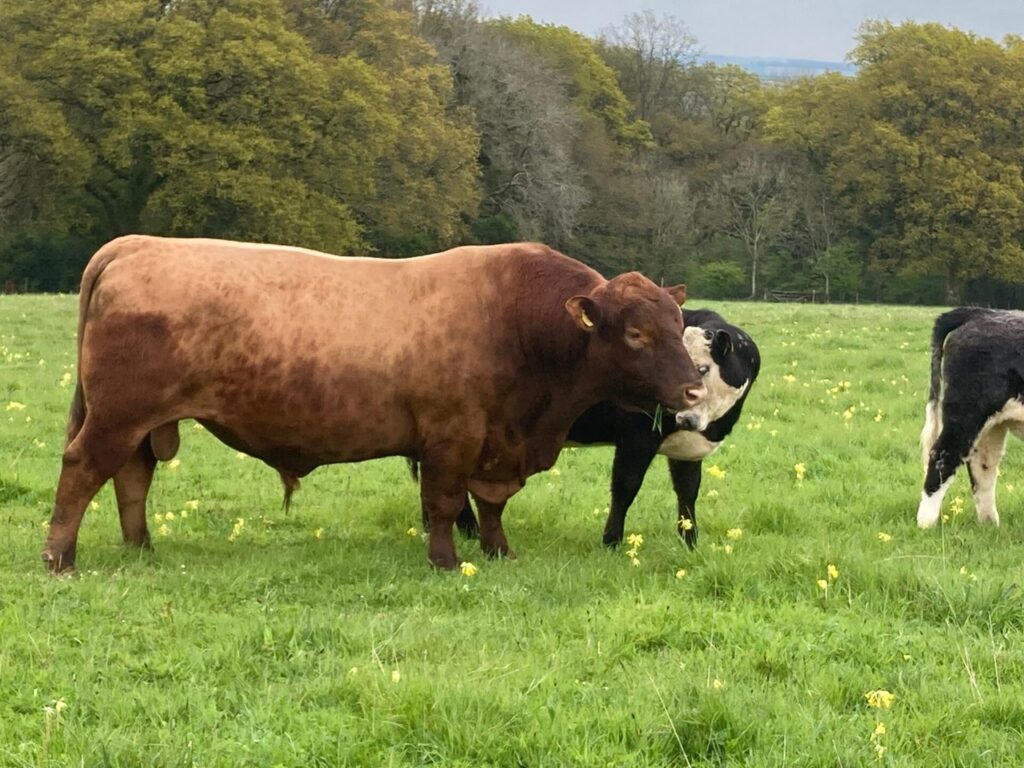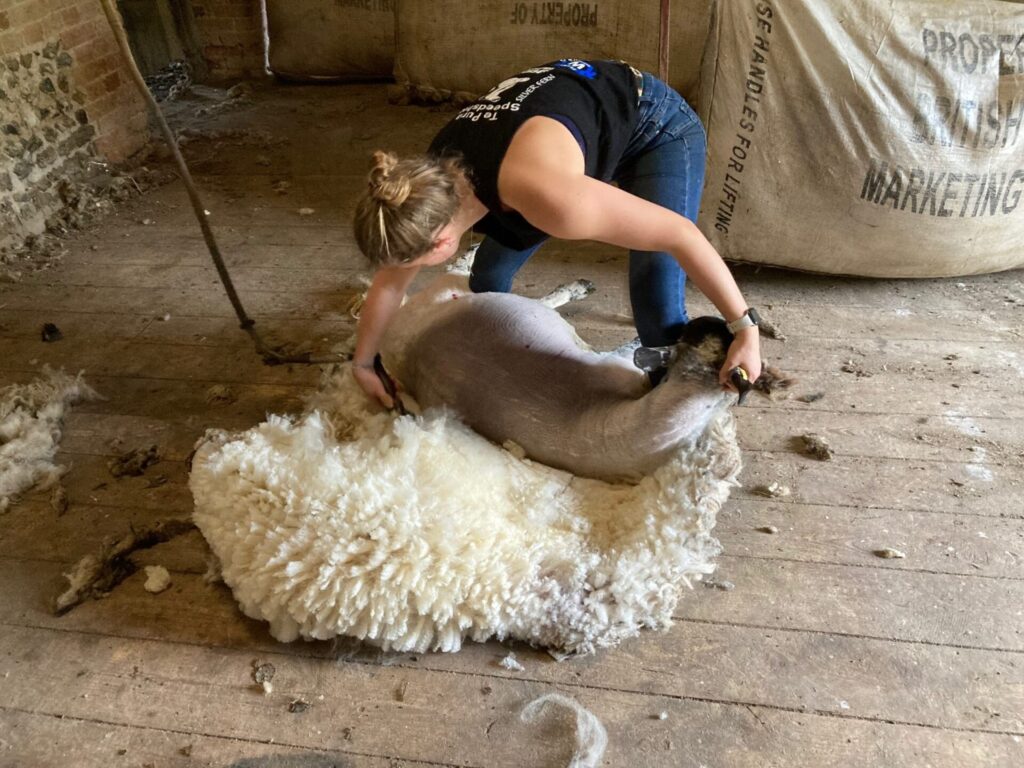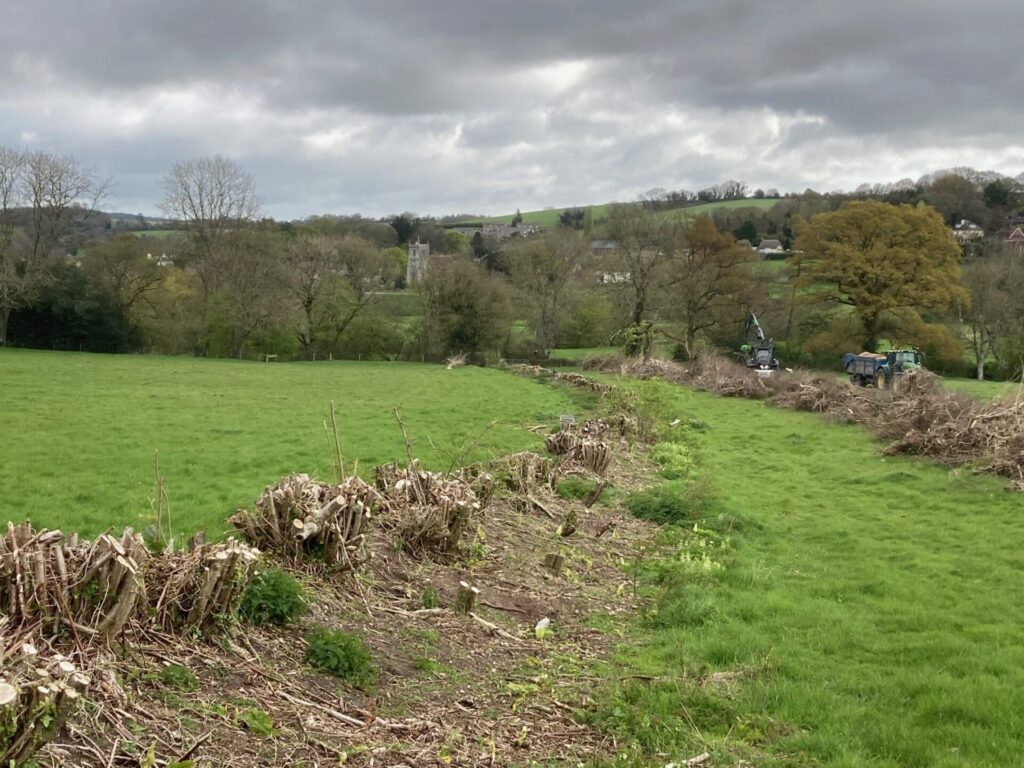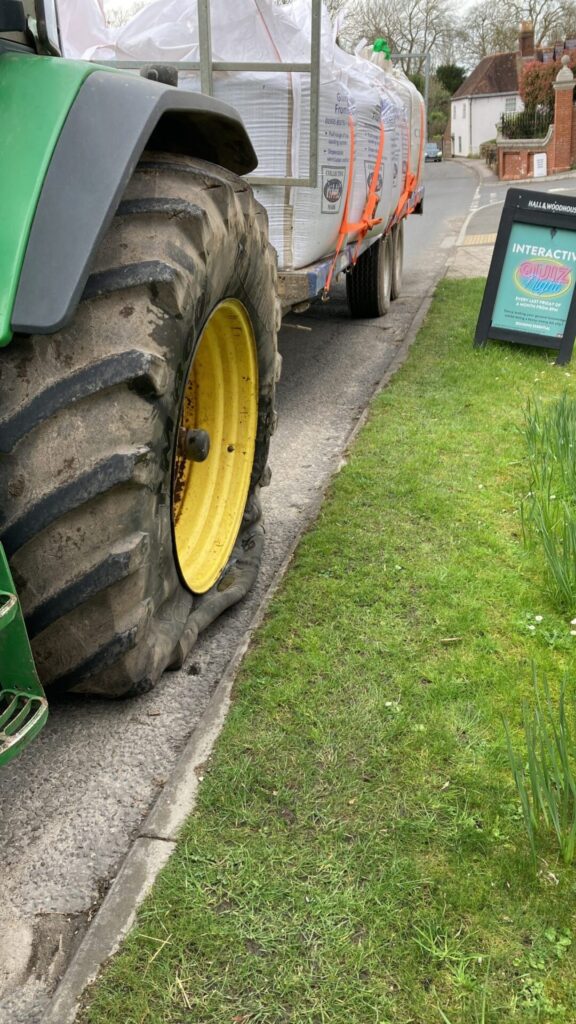Tractor troubles during critical sowing – George Hosford gets a flat during spring planting … handily while he was outside the brewery!

All images: George Hosford
The scene below is not really what you need when towing a 10 ton load of seed through town – right outside the Hall & Woodhouse brewery in fact – during a short break in the weather. The load was sufficient to sow around 60ha of our 220ha spring sowing programme. Pat from Blandford Tyres was on the scene very quickly and we managed to get the tyre blown up, the trailer unhitched and the tractor into the brewery car park for a proper repair to be made (an old factory repair on the previously tubeless tyre had given out, so Pat had to put in a £150 tube).
Brendan came to the rescue with another tractor and took the seed trailer on to the drill, and we got the barley sown by the skin of our teeth before it rained … again. But the soil was too wet to roll, like every other field this spring – and half the autumn-sown crops too.
Before I wallow too indulgently in self-pity, I’d better put in a word for the farmers who farm land a good deal wetter than ours. Our chalk-based soils drain quite quickly compared with the heavier clays on which much of the country depends for its food. Countless thousands of hectares of winter crops were under water for many months in some parts of the country, and of course, the crops will have been destroyed, with precious little chance of the soil drying out in time to sow a viable crop in the spring, as the rain continued almost without relief until late April. A great many of those fields will need more than a year to recover their productivity. One option would be to plant a summer fallow of mixed flowering species, and hope for an opportunity to sow a crop in the autumn. Otherwise, it’s leave well alone until spring next year – but who knows how much it will rain next winter? The financial consequences of all this are eye-watering.
Going bats
Last month, Claire, our cluster group leader, organised a bat walk, led by Jim Mulholland of the Vincent Wildlife Trust. He gave us a fascinating talk with slides, focussing on the greater horseshoe bat, which has a colony of around 500 very local to the farm. We learnt that many years ago our land was highly likely to have provided foraging habitat for this endangered species, and we, as well as neighbouring farms, were encouraged by the Vincent Trust to both manage our hedges to benefit the bats, and also to refrain from using Ivermectin wormers on our cattle. This family of medicines kill the flies and beetles that feed on – and live in – cowpats, and which simultaneously provide an essential food source for bats, as well as many other species.
From a low of just 2,200 individuals 30 years ago, the UK greater horseshoe bat population is now said to number around 10,000 – thanks not in small part to the Vincent Trust, which has spent huge amounts of money purchasing buildings already in use as roosts, and then adapting them to suit bat requirements as closely as possible.
Jim took us to the roost, gave us bat detectors and encouraged us to stand quietly, watching the sky and listening for the bat’s unmistakeable sonar-like noise. Normally undetectable by the human ear, through the detectors they sound a bit like the Clangers, with a rising pitch phrase of 5 or 6 blips. The sound of approaching bats on the detectors made us look upwards to be treated to swoops of individuals leaving or provide plenty of wildlife shelterreturning to the roost. The bats were silhouetted against the dusky sky, and the combination of sound and vision was captivating. This link takes you to a leaflet about the greater horseshoe bat, and it has some great pictures.

Drastic action
We have done a bit more hedge coppicing this winter – admittedly it looks pretty radical when work is complete, but once we have filled in the gaps, and the stumps have sprouted new growth, we will end up with a much healthier hedge, with a thick bottom and lots of growth which will provide shelter for nests and fledglings. We hired a man and machine for the day to chip up all the brush wood – the chipper is huge and can munch it up faster than the operator can feed it with his long armed grab! We will use the resulting wood chip in the cow shed next winter to give the straw bedding a good base, and also to mulch new hedging and trees around the farm. Fencing it in then immediately moved up high on the to-do list of ongoing work, to prevent deer and our livestock eating the new growth!
Lastly, you can see above it was time to get the wool off the ewes, a couple of weeks before they lambed. Newly-learned lessons with a Kiwi shearing gang meant the shearing can be done in-house once again.



